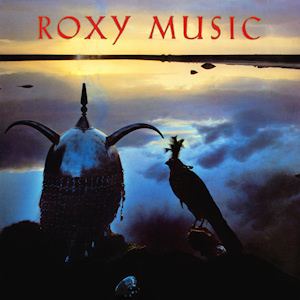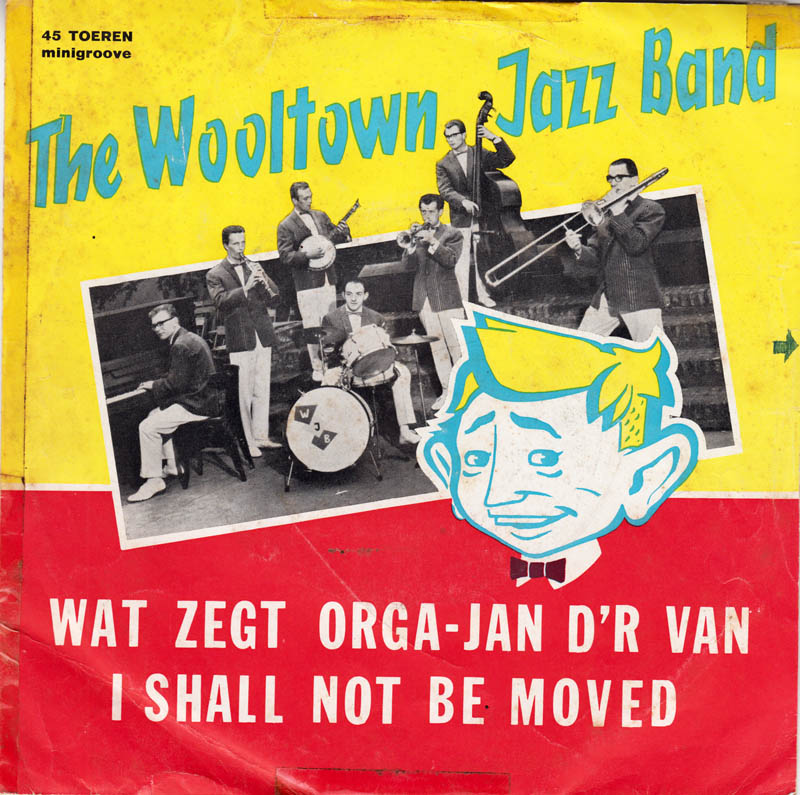If you enjoy reading about my favorite records and live in Central Michigan, then you can come hang out and hear me play my favorite records TONIGHT at the Larkin Beer Garden (next to the Dow Diamond in Midland). I’ll be spinning from 6 until 9 or so! [/PSA]

It would stand to reason that Milo Goes to College would be my top record of this year, considering what a watershed era it was for American punk music (and I have a Descendents tattoo), but instead, my favorite album released in 1982 was a largely maligned “comeback” record by an egomaniacal, dinner-jacket-wearing crooner. Granted, most of the maligning I’ve seen in online communities around Roxy Music’s masterpiece Avalon is done by what I can only assume are bitter Eno loyalists. I absolutely enjoy those early prog-fire albums the collective did in fancy space costumes – I’m technically in the middle of Michael Bracewell’s tome Remake/Remodel: Becoming Roxy Music as I write this. You just can’t heap praise on Avalon without dealing with the fact that “Virginia Plain” and “Editions of You” also exist in the same universe. In 1998, Rolling Stone saw fit to choose the Eno-free Siren (an entirely okay mid-70’s glam-pop album with maybe three or four great tracks) to stand above the rest of the band’s catalog on their “RS 200” list.
I should write, with utter transparency, that I haven’t reached Simon Morrison’s 33 1/3 book on Avalon yet in my reading queue (but I cannot wait to dive in). Because this is my website, I reserve the right to come back to this post and amend it accordingly if Morrison helps me discover that I’m completely full of it. But, there’s something refreshing about sitting down without the discursive baggage equivalent to at least three or four episodes of ‘Behind the Music’ on a record you love. Considering how much time I spend thinking and writing about music, it’s somewhat refreshing to just colo(u)r a record in verbal kindness because it’s wonderful and you love it.
That’s the hill I’m going to die on regarding Roxy Music’s 1982 album Avalon. It’s ten tracks, (partially instrumental) of thoughtful, temple-massaging, everything’s-gonna-be-alright slow jams which permanently established the 80’s iteration of Sophisiti-pop (later re-branded as the invented joke-genre Yacht-Rock) and retroactively established Bryan Ferry as the Godfather of New Wave. Perish the thought that a college radio colleague was about to apply that label to Morrissey ahead of Moz’ inevitably-cancelled Syracuse show back in 2004. I stopped him and said that Ferry deserves that title, if we insist on slapping it on somebody. So many of the “New Wave” tropes we took for granted pre-dated Duran Duran and MTV. Most of them even pre-dated Bryan Ferry, but I can’t think of one British musician of the post-Rock n’ Roll era who more encompassed so many of the New Romantic aesthetics.

It will undoubtedly strip me of cred to admit this, but the first time I remember hearing “More Than This,” Bill Murray was singing it in Lost in Translation. For those of you who haven’t seen Sofia Coppola’s elegant, insufferable romp through Tokyo, I would advise against it unless you enjoy watching privileged people being sad (Lost in Translation walked so Eat Pray Love could run). But, like a lot of mid-2000’s cinematic pablum whose apparent directive was to make young gen-xers (later renamed “millennials”) feel deep, it featured some quality tunes. From what I remember, the film brought Kevin Shields back from the dead, too, fourteen years after he dropped his own masterpiece Loveless (my 8th-favorite album of 1991). The most memorable moments of Lost in Translation all centered around music: Murray singing Roxy Music to express his disillusionment, a very young ScarJo crossing a bridge in a cab to Loveless highlight “Sometimes,” a stripper dancing to the teaches of Peaches (“Fuck the Pain Away”), and of course a pretentious ending slathered in “Just Like Honey.” The latter (putting a hip song over the credits just because you like it) felt like a device employed by countless student filmmakers in order to show off their musical taste (guilty), not something that Nic Cage’s cousin, born into Hollywood royalty, needed in order to wrap up her movie.
I’ll return to the topic at hand.
Some people ridicule that fantastic falconry cover, but I can’t imagine Avalon without it. As much as this was a departure from a lot of Roxy Music’s 70’s fare, the image fit into their singular fantasy world, drawing from the Arthurian legend and not using a sultry female model (or models) to get their point across. I would imagine that Morrisson’s book will address this, too, but I’m willing to wager that Ferry was seeking his own Avalon upon which to recover from the 70s, ultimately building a musical one. Either way, it’s appropriate, because Avalon is much more reflective and infinitely less horny than “classic” Roxy Music. Rather than playing like a raucous night out at some club, it feels like an ex-clubber approaching middle age, taking their coffee out onto the back patio and thinking about all of the mistakes they’ve made. It’s overwhelmingly tasteful music that still manages to be funky and doesn’t abuse saxophones like 98% of the coke-recovery (or coke-relapse) jams that followed in the decade. Andy Mackay deserves recognition on that feat alone.
I think I’m going to stop here. I did some light Googling in order to fact-check myself, and I wound up spending about twenty minutes reading up on Welsh mythology. Listen to Roxy Music’s Avalon. If you have a record player, buy it on vinyl. Get home from a particularly long day, put the needle at the beginning of Side 2, prepare a hot compress or grab a cold drink during “The Main Thing,” and make sure to lay down with either source of comfort by the time the mysterious, drifting into to “Take a Chance With Me” begins. It’s bliss.
For those of you interested in my Top 10 Albums of 1982:
- Roxy Music – ‘Avalon’
- Descendents – ‘Milo Goes to College’
- Angry Samoans – ‘Back from Samoa’
- Discharge – ‘Hear Nothing See Nothing Say Nothing’
- Bad Brains s/t
- Zero Boys – ‘Vicious Cycle’
- Orange Juice – ‘You Can’t Hide Your Love Forever’
- Youth Brigade – ‘Sound and Fury’
- Yazoo – ‘Upstairs at Eric’s’
- Cocksparrer – ‘Shock Troops’



 Everyone has their favorite mechanism of procrastination, and here’s mine. My colleague’s husband, who happens to be a prominent local techno DJ and producer, clued me in to a phone app that helps catalog your record collection. How I hadn’t foraged for an app like that already after over a decade of accumulating records is beyond me. So, in between stretches of writing, editing, and self-doubting, I’ve taken to updating my collection on Discogs. In the process I’ve rediscovered a few great pieces that I’d either forgotten I had or just hadn’t listened to in a while.
Everyone has their favorite mechanism of procrastination, and here’s mine. My colleague’s husband, who happens to be a prominent local techno DJ and producer, clued me in to a phone app that helps catalog your record collection. How I hadn’t foraged for an app like that already after over a decade of accumulating records is beyond me. So, in between stretches of writing, editing, and self-doubting, I’ve taken to updating my collection on Discogs. In the process I’ve rediscovered a few great pieces that I’d either forgotten I had or just hadn’t listened to in a while.
 The great European Jazz Bands have a hard time to get by. Mister Acker Bilk’s jazz band has stopped after his death, the famous band of Kenny Ball continues with his son, but they don’t play in the big concert halls anymore. There are only very few really famous jazz bands in Europe still around, one of them is the British Big Chris Barber Band. I’ve been a keen follower of this band since the early 70’s and attended nearly 100 concerts. Chris has been a great example to me and with the great musicians in his band he shows how this music was meant to be played. It sounds awesome but Chris Barber will turn 87 next april so how long will he continue? There is no follow-up. In our country we still have the Dutch Swing Collage Band which started in the last year of the second world war. I think it might be the oldest jazz band in the world still playing. Of course the personnel has changed during the years but this band, too, consists mostly of elderly players. They play very well of course, but they don’t appeal to the younger generation as they used to and, unfortunately, our band is in the same boat.
The great European Jazz Bands have a hard time to get by. Mister Acker Bilk’s jazz band has stopped after his death, the famous band of Kenny Ball continues with his son, but they don’t play in the big concert halls anymore. There are only very few really famous jazz bands in Europe still around, one of them is the British Big Chris Barber Band. I’ve been a keen follower of this band since the early 70’s and attended nearly 100 concerts. Chris has been a great example to me and with the great musicians in his band he shows how this music was meant to be played. It sounds awesome but Chris Barber will turn 87 next april so how long will he continue? There is no follow-up. In our country we still have the Dutch Swing Collage Band which started in the last year of the second world war. I think it might be the oldest jazz band in the world still playing. Of course the personnel has changed during the years but this band, too, consists mostly of elderly players. They play very well of course, but they don’t appeal to the younger generation as they used to and, unfortunately, our band is in the same boat.